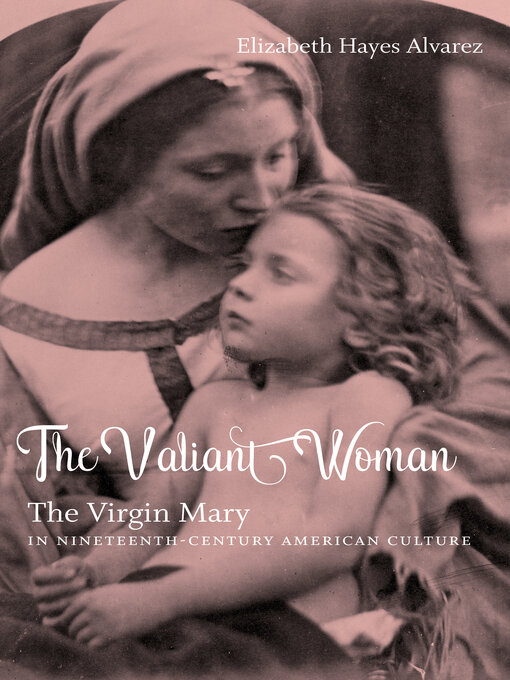The Valiant Woman
The Virgin Mary in Nineteenth-Century American Culture
From a range of diverse sources, including the writings of Anna Jameson, Anna Dorsey, and Alexander Stewart Walsh and magazines such as The Ladies' Repository and Harper's, Alvarez demonstrates that Mary was represented as pure and powerful, compassionate and transcendent, maternal and yet remote. Blending romantic views of motherhood and female purity, the virgin mother's image enamored Protestants as a paragon of the era's cult of true womanhood, and even many Catholics could imagine the Queen of Heaven as the Queen of the Home. Sometimes, Marian imagery unexpectedly seemed to challenge domestic expectations of womanhood. On a broader level, The Valiant Woman contributes to understanding lived religion in America and the ways it borrows across supposedly sharp theological divides.
-
Creators
-
Publisher
-
Release date
April 25, 2016 -
Formats
-
Kindle Book
-
OverDrive Read
- ISBN: 9781469627434
- File size: 4748 KB
-
EPUB ebook
- ISBN: 9781469627434
- File size: 4748 KB
-
-
Languages
- English
-
Reviews
-
Library Journal
March 1, 2016
Alvarez (religion, Temple Univ.) has written a well-researched exploration of America's widespread interest in the Virgin Mary between the Immaculate Conception declaration of 1854 and its semicentennial in 1904. In five roughly chronological and thematic chapters, Alvarez examines specific moments in Mariology through cultural sources such as conversion fiction, the popular press, mass-produced Marian imagery, and acclaimed art history texts. She convincingly argues that Americans of the period, Protestant and Catholic alike, understood Mary as an exemplar of both woman- and motherhood. The author teases out differences between Catholic and Protestant invocations of Mary as a figure of veneration and documents the deployment of the icon by those who saw in divine motherhood a powerful metaphor for women's political leadership. The work could have spent more time discussing where Mary fits within other models available to Americans during this period as well as included a discussion of Marian imagery and rhetoric in the context of the era's racial politics. For example, what role did she play within the enslaved and free black communities, among Mexican Americans, and to the white supremacists of the Reconstruction South? A more intersectional analysis would have strengthened this study. VERDICT Scholars of 19th-century women's and gender, religious, and visual history will appreciate Alvarez's insights.--Anna J. Clutterbuck-Cook, Massachusetts Historical Soc. Lib., Boston
Copyright 2016 Library Journal, LLC Used with permission.
-
Formats
- Kindle Book
- OverDrive Read
- EPUB ebook
subjects
Languages
- English
Loading
Why is availability limited?
×Availability can change throughout the month based on the library's budget. You can still place a hold on the title, and your hold will be automatically filled as soon as the title is available again.
The Kindle Book format for this title is not supported on:
×Read-along ebook
×The OverDrive Read format of this ebook has professional narration that plays while you read in your browser. Learn more here.

